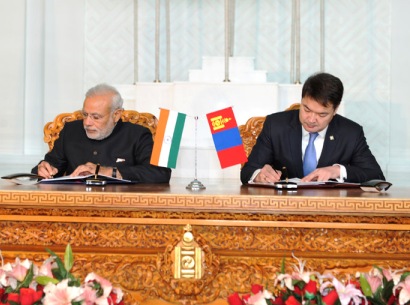
A Chinese ballistic missile system. File photo
NEW YORK (PTI): China, under President Xi Jinping's leadership, has re-engineered many of its long-range ballistic missiles to carry multiple warheads after years of maintaining a minimal nuclear force, according to a media report.
China's move has put US President Barack Obama under more pressure than ever to deploy missile defence systems in the Pacific, The New York Times reported.
China's decision to make some missiles more powerful is "particularly notable" since the technology of miniaturising warheads and putting three or more atop a single missile had been in Chinese hands for decades, the report said.
"But a succession of Chinese leaders deliberately let it sit unused; they were not interested in getting into the kind of arms race that characterised the Cold War nuclear competition between the US and the Soviet Union," it said.
"President Xi Jinping appears to have altered course, at the same moment that he is building military airfields on disputed islands in the South China Sea, declaring exclusive Chinese 'air defence identification zones', sending Chinese submarines through the Persian Gulf for the first time and creating a powerful new arsenal of cyberweapons," it said.
The move by China has taken American officials by surprise and has become evidence of the challenge the Obama administration faces in dealing with China, the report said.
Obama is under more pressure than ever to deploy missile defence systems in the Pacific, although American policy officially states that those interceptors are to counter North Korea, not China, the report said.
"At the same time, the President is trying to find a way to signal that he will resist Chinese efforts to intimidate its neighbours, including some of Washington's closest allies, and to keep the US out of the Western Pacific," it said.
American officials say that till now China has declined to engage in talks on the decision to begin deploying multiple nuclear warheads atop its ballistic missiles.
"The US would like to have a discussion of the broader issues of nuclear modernisation and ballistic missile defence with China," said Phillip C Saunders, director of the Center for the Study of Chinese Military Affairs at National Defense University, a Pentagon-funded academic institution attended by many of the military's next cadre of senior commanders.
"The Chinese have been reluctant to have that discussion in official channels," Saunders said.
The new deployments of Chinese warheads is "a bad day for nuclear constraint," the report quoted Hans M Kristensen, director of the Nuclear Information Project at the Federation of American Scientists, as saying.
"China's little force is slowly getting a little bigger and its limited capabilities are slowly getting a little better," he said.
For American officials, the Chinese move fits into a rapid transformation of their strategy under Xi, now considered one of the most powerful leaders since Deng Xiaoping.
Further, some of China's military modernisation programme has been aimed directly at America's technological advantage, the report said.
"China has sought technologies to block American surveillance and communications satellites, and its major investments in cybertechnology and probes and attacks on American computer networks are viewed by American officials as a way to both steal intellectual property and prepare for future conflict," it said.
"This is obviously part of an effort to prepare for long-term competition with the United States," said Ashley J Tellis, a senior associate at the Carnegie Endowment for International Peace.
"The Chinese are always fearful of American nuclear advantage. America's nuclear forces currently outnumber China's by eight to one," Tellis said.
 Previous Article
Previous Article Next Article
Next Article












The Indian Air Force, in its flight trials evaluation report submitted before the Defence Ministry l..
view articleAn insight into the Medium Multi-Role Combat Aircraft competition...
view articleSky enthusiasts can now spot the International Space Station (ISS) commanded by Indian-American astr..
view article